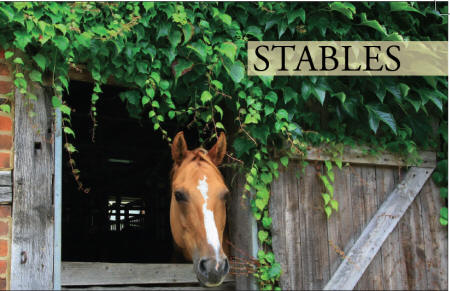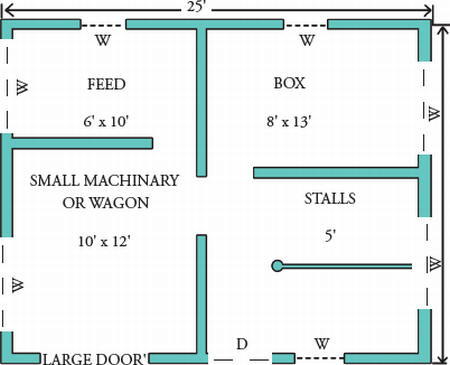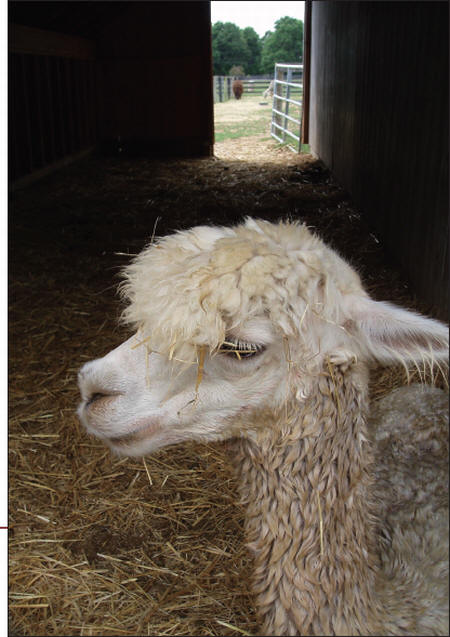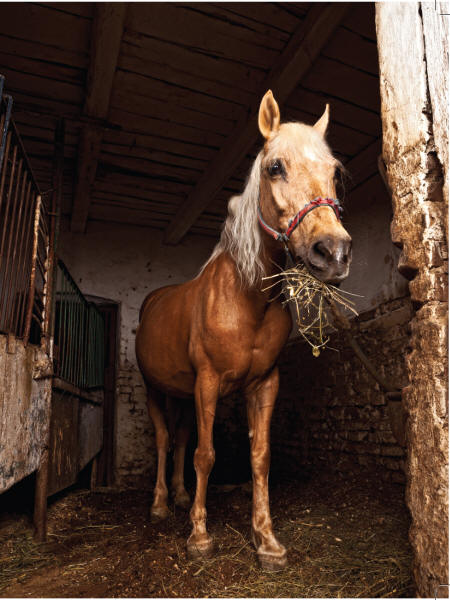
If you are raising larger livestock—sheep, goats, horses, or llamas, for example—you will need a small stable where they can go for protection during inclement weather and especially during the winter months in cooler regions. Building stables can be relatively easy and inexpensive, and doing it yourself means that you can customize the design to fit your and your animals’ needs.
Stables should be built on relatively flat ground that does not become excessively wet or flooded during heavy rains. Laying down a thick bed of gravel or sand below the stable floor will help keep surface water drained. Also consider the positioning of the stable; try to find an area protected from strong winds but also near your own home so you don’t have to go too far to tend the animals during bad weather. Facing the stable toward the south or west will help keep a nice breeze flowing through your stable while protecting it from harsh northerly winds. A place to store feed and hay for your animals is also a worthwhile addition when planning and building a simple stable.
General Stable Construction
When building a stable for your livestock, make sure that the interior walls are weatherproof and free of dampness. To keep moisture out of the stable, the building should be situated on slightly higher ground than that surrounding it. This will keep the ground from getting too damp, and vapors will not be as likely to rise through the floor and foundation walls. If possible, it is best to make the stable floor out of concrete between 4 and 6 inches thick.
The stable walls should be built solid. Brick and stone are preferable to wood, but wooden stables also do an adequate job of providing shelter and are much more common in the United States, due to the availability of wood. If you decide to build your stable using bricks, building the walls one brick (9 inches) thick should be suitable. Internal walls should be built solid, and the foundation must be deep and wide enough to give the whole structure stability. If one side of your stable gets the brunt of driving rain or moisture, it is a good idea to cover it with an extra layer of concrete or stucco, or hang shingles to protect the wall.
The external angles of all of the doors and windows should be rounded. This can be done by using bull-nosed bricks. This way, horses and other livestock will not be injured by coming into contact with any sharp angles or ledges.
A Small Stable for Horses, Llamas, or Sheep
This simple stable is inexpensive to build and has plenty of room for two horses, llamas, or sheep, along with feed and tack. Hay and grain can be kept in the loft. Place the windows as high up as possible and hinge them at the bottom so they’ll open inwardly to permit the air to pass over the animals without blowing directly on them. Make the stable door a “Dutch door”; that is, a door divided horizontally in the middle so that the upper half may be opened and the lower half remain closed.

Plans for a small stable.

